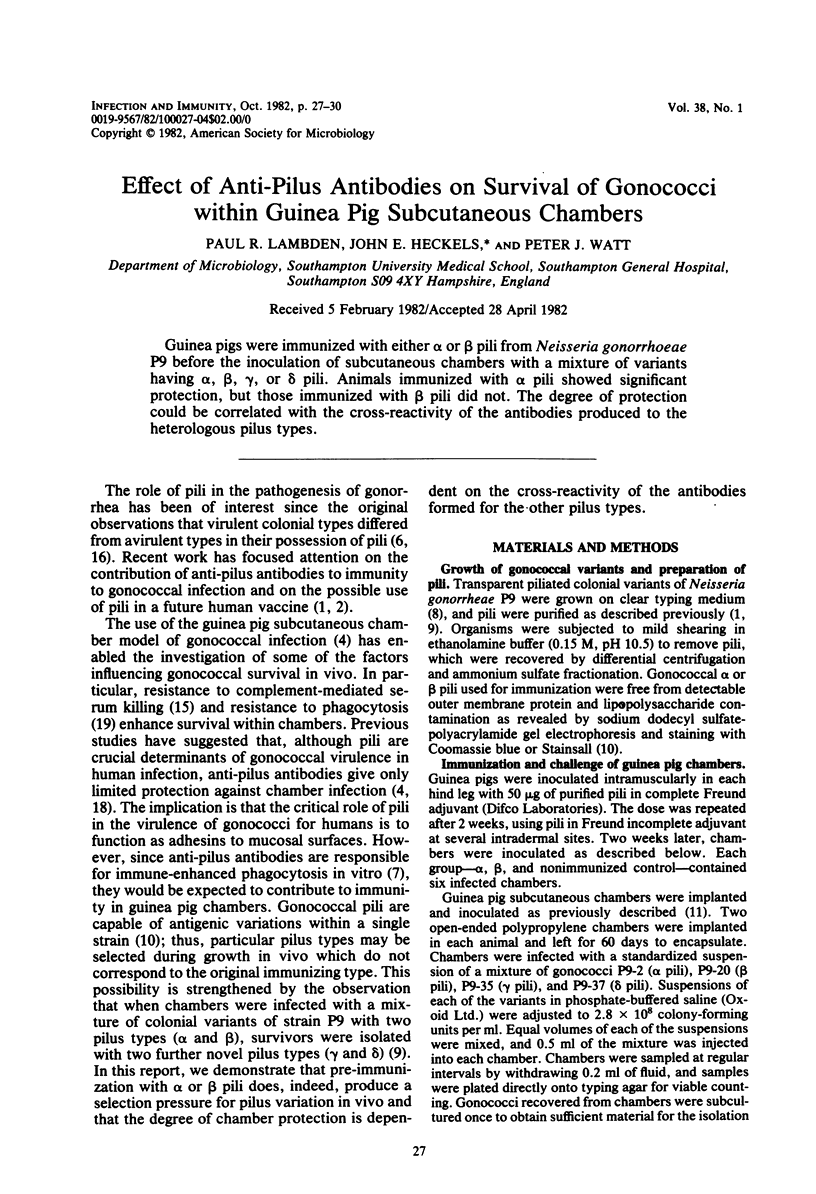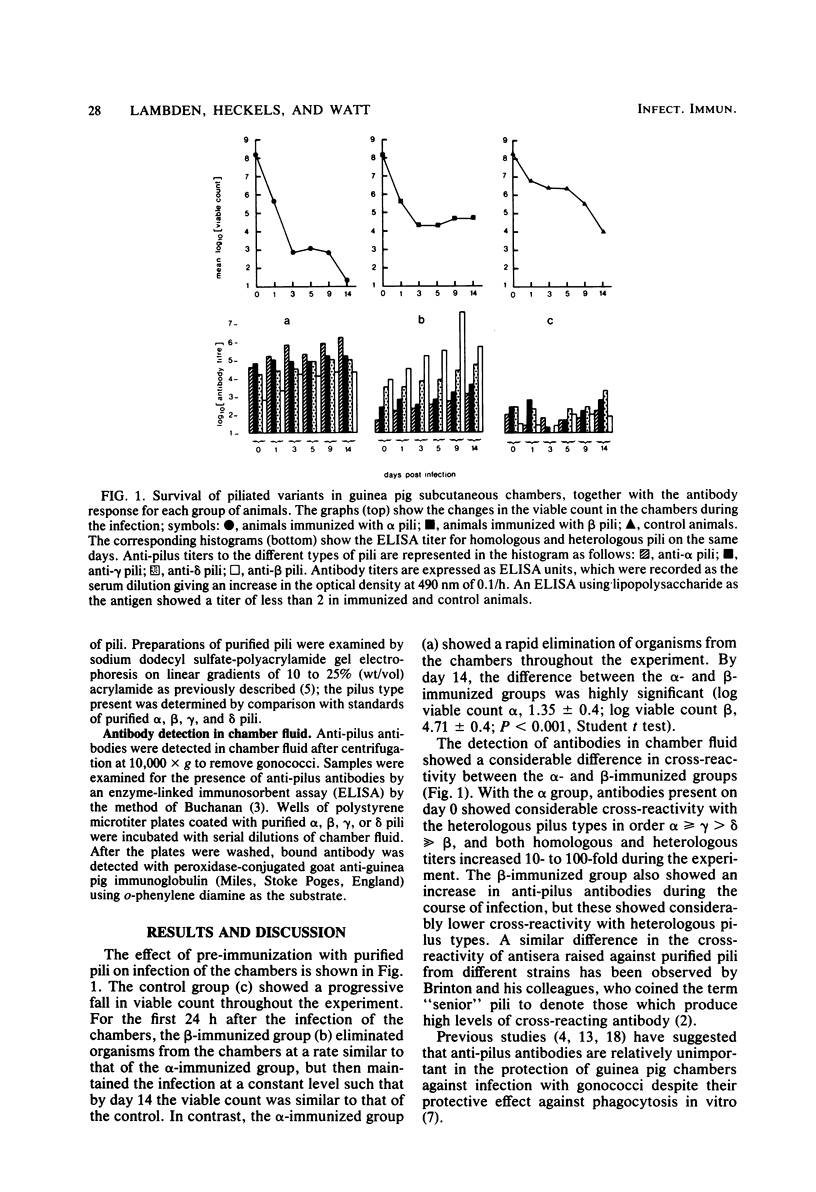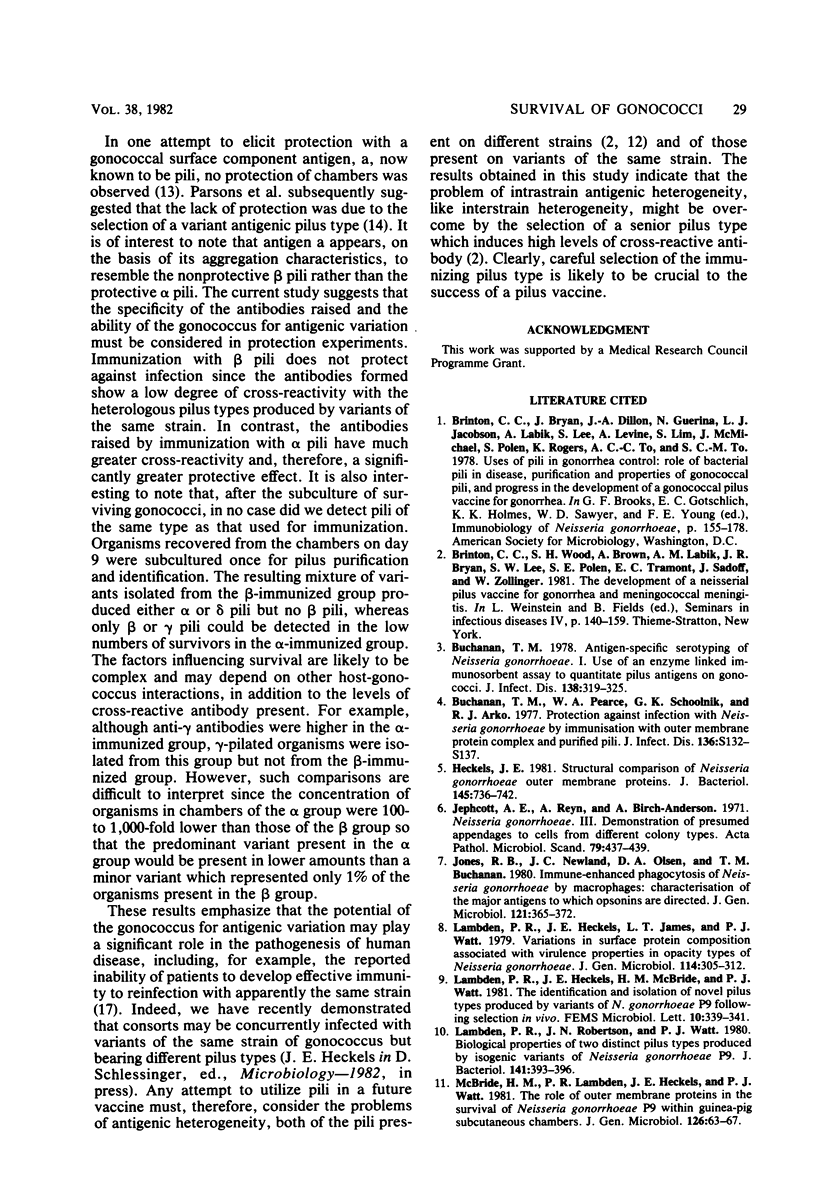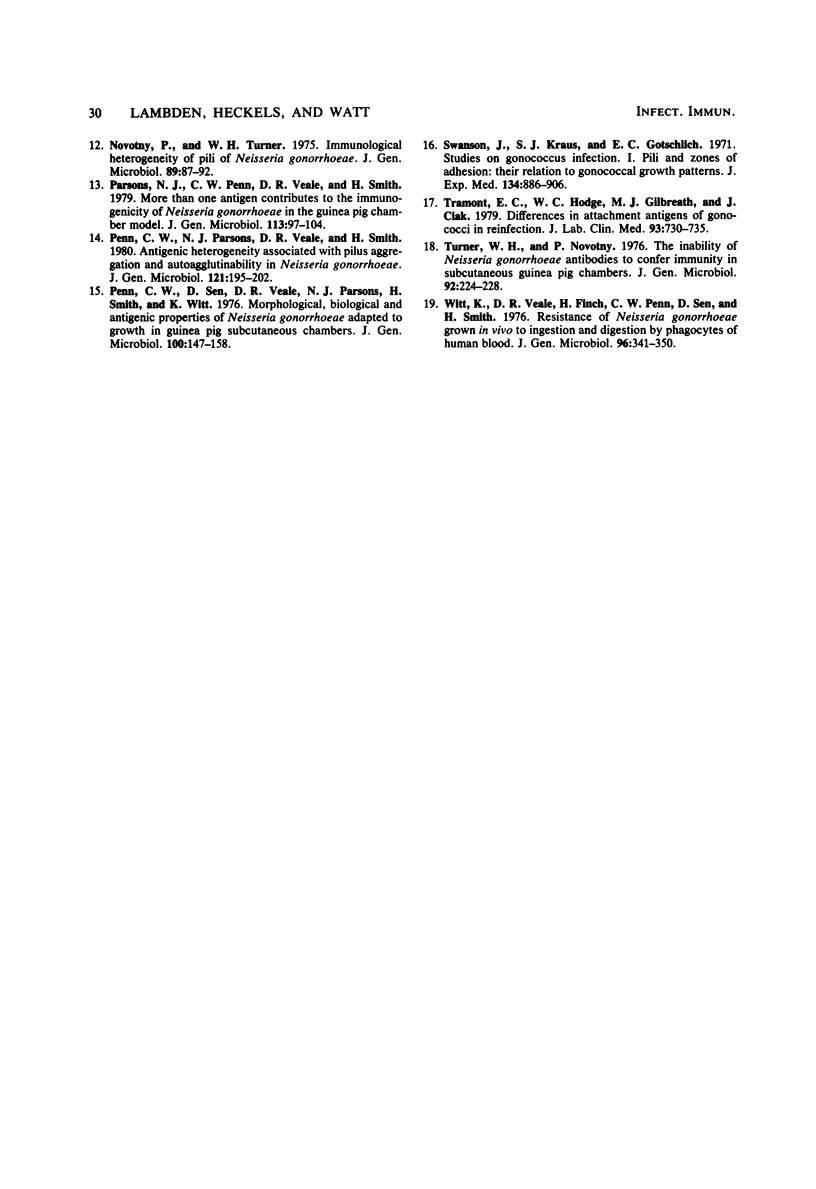Abstract
Guinea pigs were immunized with either alpha or beta pili from Neisseria gonorrhoeae P9 before the inoculation of subcutaneous chambers with a mixture of variants having alpha, beta, gamma, or delta pili. Animals immunized with alpha pili showed significant protection, but those immunized with beta pili did not. The degree of protection could be correlated with the cross-reactivity of the antibodies produced to the heterologous pilus types.
Full text
PDF



Selected References
These references are in PubMed. This may not be the complete list of references from this article.
- Buchanan T. M. Antigen-specific serotyping of Neisseria gonorrhoeae. I. Use of an enzyme-linked immunosorbent assay to quantitate pilus antigens on gonococci. J Infect Dis. 1978 Sep;138(3):319–315. doi: 10.1093/infdis/138.3.319. [DOI] [PubMed] [Google Scholar]
- Buchanan T. M., Pearce W. A., Schoolnik G. K., Arko R. J. Protection against infection with Neisseria gonorrhoeae by immunization with outer membrane protein complex and purified pili. J Infect Dis. 1977 Aug;136 (Suppl):S132–S137. doi: 10.1093/infdis/136.supplement.s132. [DOI] [PubMed] [Google Scholar]
- Heckels J. E. Structural comparison of Neisseria gonorrhoeae outer membrane proteins. J Bacteriol. 1981 Feb;145(2):736–742. doi: 10.1128/jb.145.2.736-742.1981. [DOI] [PMC free article] [PubMed] [Google Scholar]
- Jephcott A. E., Reyn A., Birch-Andersen A. Neisseria gonorrhoeae 3. Demonstration of presumed appendages to cells from different colony types. Acta Pathol Microbiol Scand B Microbiol Immunol. 1971;79(3):437–439. doi: 10.1111/j.1699-0463.1971.tb00086.x. [DOI] [PubMed] [Google Scholar]
- Jones R. B., Newland J. C., Olsen D. A., Buchanan T. M. Immune-enhanced phagocytosis of Neisseria gonorrhoeae by macrophages: characterization of the major antigens to which opsonins are directed. J Gen Microbiol. 1980 Dec;121(2):365–372. doi: 10.1099/00221287-121-2-365. [DOI] [PubMed] [Google Scholar]
- Lambden P. R., Heckels J. E., James L. T., Watt P. J. Variations in surface protein composition associated with virulence properties in opacity types of Neisseria gonorrhoeae. J Gen Microbiol. 1979 Oct;114(2):305–312. doi: 10.1099/00221287-114-2-305. [DOI] [PubMed] [Google Scholar]
- Lambden P. R., Robertson J. N., Watt P. J. Biological properties of two distinct pilus types produced by isogenic variants of Neisseria gonorrhoeae P9. J Bacteriol. 1980 Jan;141(1):393–396. doi: 10.1128/jb.141.1.393-396.1980. [DOI] [PMC free article] [PubMed] [Google Scholar]
- McBride H. M., Lambden P. R., Heckels J. E., Watt P. J. The role of outer membrane proteins in the survival of Neisseria gonorrhoeae P9 within guinea-pig subcutaneous chambers. J Gen Microbiol. 1981 Sep;126(1):63–67. doi: 10.1099/00221287-126-1-63. [DOI] [PubMed] [Google Scholar]
- Novotny P., Turner W. H. Immunological heterogeneity of pili of Neisseria gonorrhoeae. J Gen Microbiol. 1975 Jul;89(1):87–92. doi: 10.1099/00221287-89-1-87. [DOI] [PubMed] [Google Scholar]
- Parsons N. J., Penn C. W., Veale D. R., Smith H. More than one antigen contributes to the immunogenicity of Neisseria gonorrhoeae in the guinea pig chamber model. J Gen Microbiol. 1979 Jul;113(1):97–104. doi: 10.1099/00221287-113-1-97. [DOI] [PubMed] [Google Scholar]
- Penn C. W., Parsons N. J., Veale D. R., Smith H. Antigenic heterogeneity associated with pilus aggregation and autoagglutinability in Neisseria gonorrhoeae. J Gen Microbiol. 1980 Nov;121(1):195–202. doi: 10.1099/00221287-121-1-195. [DOI] [PubMed] [Google Scholar]
- Penn C. W., Veale D. R., Smith H. Selection from gonococci grown in vitro of a colony type with some virulence properties of organisms adapted in vivo. J Gen Microbiol. 1977 May;100(1):147–158. doi: 10.1099/00221287-100-1-147. [DOI] [PubMed] [Google Scholar]
- Swanson J., Kraus S. J., Gotschlich E. C. Studies on gonococcus infection. I. Pili and zones of adhesion: their relation to gonococcal growth patterns. J Exp Med. 1971 Oct 1;134(4):886–906. doi: 10.1084/jem.134.4.886. [DOI] [PMC free article] [PubMed] [Google Scholar]
- Tramont E. C., Hodge W. C., Gilbreath M. J., Ciak J. Differences in attachment antigens of gonococci in reinfection. J Lab Clin Med. 1979 May;93(5):730–735. [PubMed] [Google Scholar]
- Turner W. H., Novotny P. The inability of Neisseria gonorrhoeae pili antibodies to confer immunity in subcutaneous guinea-pig chambers. J Gen Microbiol. 1976 Jan;92(1):224–228. doi: 10.1099/00221287-92-1-224. [DOI] [PubMed] [Google Scholar]
- Witt K., Veale D. R., Finch H., Penn C. W., Sen D., Smith H. Resistance of Neisseria gonorrhoeae grown in vivo to ingestion and digestion by phagocytes of human blood. J Gen Microbiol. 1976 Oct;96(2):341–350. doi: 10.1099/00221287-96-2-341. [DOI] [PubMed] [Google Scholar]


